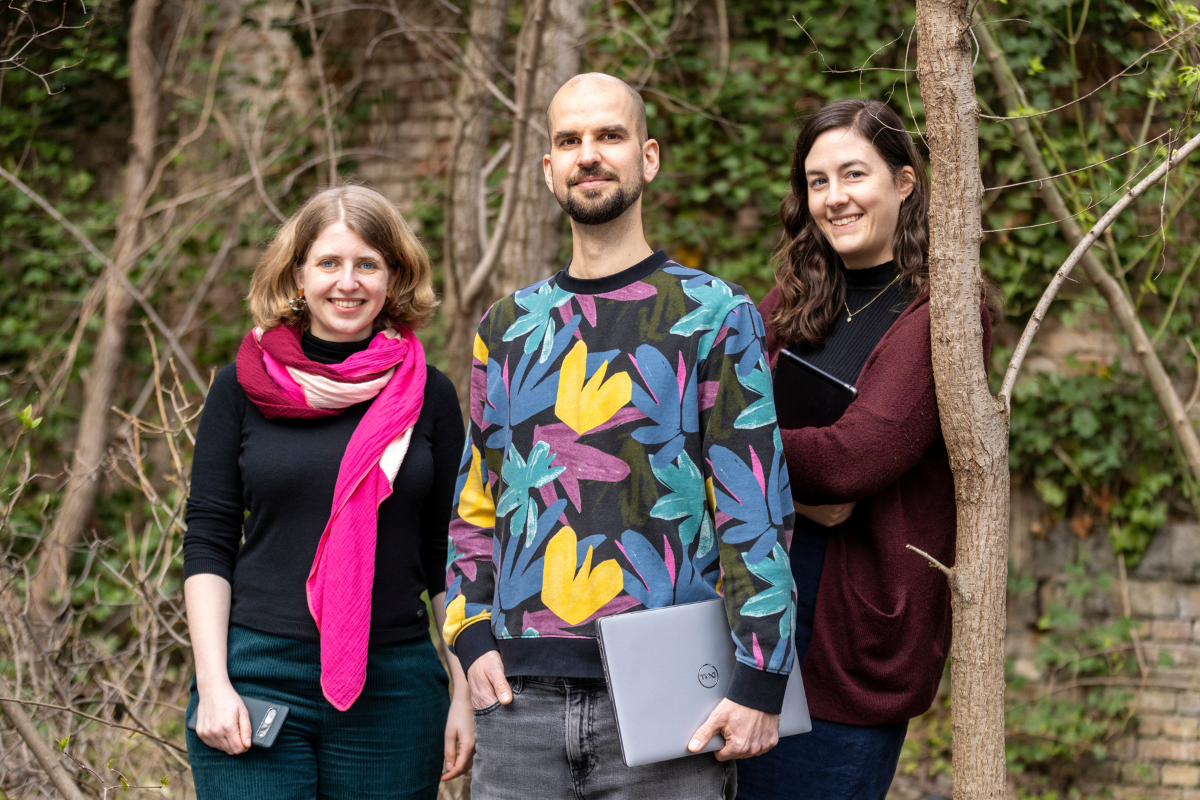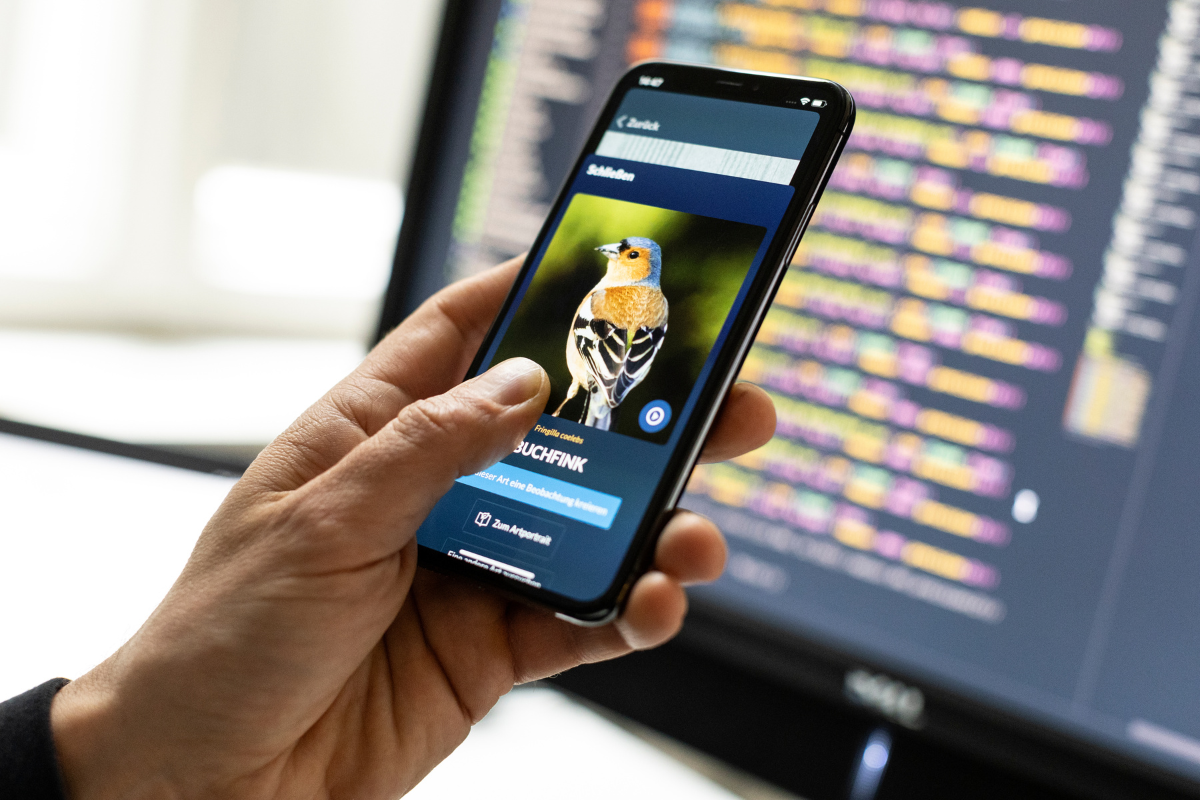With around 120,000 users, the Naturblick app is one of the Museum für Naturkunde Berlin's ‘bestsellers’. Museum für Naturkunde Berlin, although ‘bestseller’ is a misnomer in that it can be downloaded and used free of charge. ‘The Naturblick app supports the urban experience of nature’, as Dr Omid Khorramshahi, lead developer of the app, puts it. It is a low-threshold offer for those who are interested in nature in the city without having much knowledge of the species. It can be used to identify birds by their song and plants by means of self-taken photos.
The species can also be identified using over 700 species portraits and a manual identification key and then entered into a digital field book together with their location. ‘But that's only one side of the coin,’ emphasises Omid Khorramshahi. The other is what can be done with all the collected data, a ‘scientific treasure’. Firstly, there is the anonymised usage data. How often the app was accessed, how many users use it, which components of the app are used and how much.
‘This shows us which tools are well received, provides us with valuable insights for the Naturblick app as a contribution to digital environmental education and enables us to identify and correct errors.’ So the Naturblick app is getting better and better. Of course, the ‘observations’ entered in the field books are just as interesting. These are stored for users on the museum's servers. ‘However, the aim from the outset was also to analyse these observations for scientific purposes.’
One of the first such project was the extremely successful ‘Nightingale Research Project’. The song of Berlin's nightingales was recorded over three seasons. The research question behind it: Do the nightingales of different Berlin neighbourhoods sing in different nightingale dialects? Thousands of recordings were collected, not only from Berlin, but also from all over Germany, other European countries and even Asia. The exciting results were published in three scientific publications. And do the nightingales now sing in dialects? Not at all - the nightingales sing surprisingly standardised melodies not only in Spandau and Neukölln, but throughout Europe.

"We are currently working on a new research question. We are looking at the local distribution of observations within Berlin,’ reports Omid Khorramshahi. The data can provide interesting conclusions for urban planning and also for the use of urban space in Berlin in general. ‘It has already been shown several times that experiencing nature in the city has very positive effects on health, recreation and relaxation.’ Experiencing nature naturally has something to do with being close to nature. So where exactly does this experience of nature actually take place?
As most observations are recorded in the field records together with their location, they can be visualised on a map of Berlin. If this map is combined with a second map showing residential areas, green spaces and other forms of development, it becomes clear that most observations are made in parks, forests and along the edges of waterways. This can be seen very clearly, for example, on the combined map of the Treptow-Köpenick district. This was to be expected and had already been predicted. What is surprising, however, is that the difference in the frequency of nature observations between residential and non-residential areas is nowhere near as clear as one would expect.
On average, more than a third of the nature observations to date have been made in residential areas. "This raises exciting questions: what factors influence the experience of nature in the city?
What structural measures should be taken to develop the living space in a more natural way and thus increase the quality of life in the residential area?" It is also interesting to note that the ratio between observations inside and outside residential areas differs from district to district. If we take the data for the borough of Reinickendorf, we see that the borough is not only very green overall, but that its residential areas are also places where nature can be experienced. An above-average number of nature observations were made using the app there.
The situation is completely different in the Mitte district, where there are very few observations of nature in the residential areas, a result that either indicates a lack of nature there or that nature is less perceived, which is why users of the app in Berlin-Mitte are more concerned with the nature of the green spaces than with that of their residential area. Of course, it is also interesting to see which animal and plant species have been entered in the field books. The overview of species and the corresponding observation locations are currently being checked with the help of volunteers to see whether the species has actually been correctly identified at the corresponding location.
These results will not only help to monitor the identity quality of the species recognised by the app's AI, but also to record Berlin's biodiversity. An initial distribution map using the example of the nightingale, hedgehog and walnut tree can already be found on the Naturblick app homepage. Conclusions for urban planning measures can also be drawn from such distribution maps. It should be borne in mind that these maps do not contain all occurrences of the respective species, but only those that the app users have entered in their field books. However, the fact that the first Berlin institutions have already expressed interest in the observations speaks in favour of their value. ‘We're very pleased about that, of course.’
